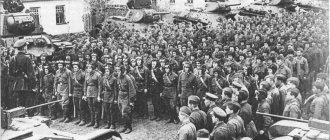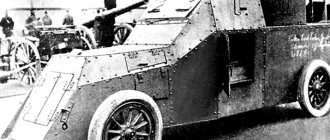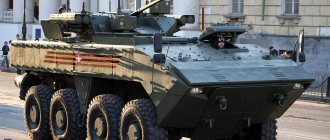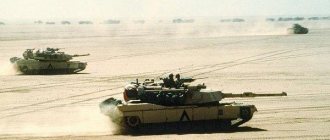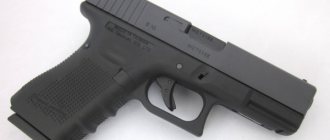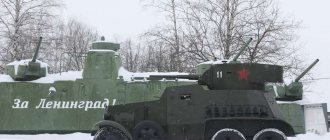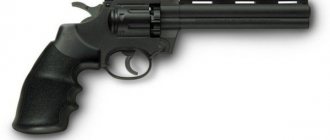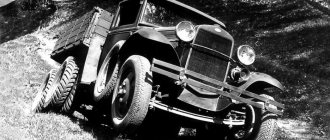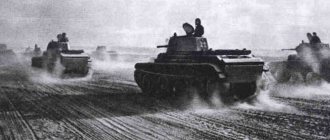The BTR-90 "Rostok" is a Russian wheeled armored personnel carrier, developed back in the mid-90s by designers of the Gorky Automobile and Arzamas Machine-Building Plants. The BTR-90 is the latest vehicle from the family of proven Soviet eight-wheeled armored personnel carriers (BTR-60, 70, 80).
The BTR-90 Rostok entered service in 2008. It was planned that serial production of the armored personnel carrier would begin in 2011, but the Ministry of Defense refused to purchase this vehicle. The military explained their decision by their reluctance to spend the budget on purchasing another “upgrade” of old Soviet equipment. Their argument is quite understandable: any equipment has its own limit for modernization, and, apparently, the Ministry of Defense considered that for this range of combat vehicles it had already been reached.
There are two modifications of the armored personnel carrier - BTR-90 "Berezhok" and BTR-90M "Bakhcha", which differ from the base model in the design of the fighting compartment. In addition, work was carried out to create a BMM “Tendon” ambulance and a self-propelled artillery unit based on the BTR-90 armored personnel carrier. However, both projects were never realized.
History of creation
Work on the creation of a new wheeled armored personnel carrier began at the design bureau of the Gorky Automobile Plant in the first half of the 90s, immediately after receiving the technical specifications from the Ministry of Defense.
It should be said that the military’s requirements for the new vehicle were quite stringent. The assignment provided for the presence of ten seats inside the hull for crew members and troops, the possibility of installing new and promising types of weapons on the vehicle, and a significant increase in the level of maneuverability, mobility and speed characteristics of the armored personnel carrier. Customers demanded that special attention be paid to armor protection. And all of the above should not have a negative impact on the air transportability of the combat vehicle.
The preparation of the tactical and technical specifications for the armored personnel carrier, and all its further development, was carried out taking into account the experience of using such vehicles in real combat conflicts, which by this time the Russian military already had plenty of.
In 1994, a prototype of the vehicle was assembled at the Arzamas plant, the armored hull of which was manufactured at the Chelyabinsk Heavy Engineering Plant. In the same year, the BTR-90 was presented to the general public.
The nineties were not an easy time for the domestic military-industrial complex, so testing and modifications of the new armored personnel carrier dragged on until 2004.
At the same time, work was underway on the creation of an armored medical vehicle (AMV) based on the BTR-90 Rostock. They started in 1997. The developer of this project was chosen. A prototype of the Tendon BMM was manufactured in June 2000, after which its state tests began. The project completion dates were postponed several times; in May 2006, a decision was made to completely stop the work.
The BTR-90 was officially put into service in 2008. This vehicle became the first wheeled armored personnel carrier created by the domestic industry. In 2009, the troops received an experimental batch of BTR-90, but its status remained uncertain. The fact is that the state defense order only discussed the production of the BTR-82A; there was no other wheeled armored personnel carrier in the document. At the same time, the development of a new concept of weapons for the ground forces of the Russian Armed Forces was underway, and, alas, there was a place in it for the BTR-90 - in 2011, the Ministry of Defense officially abandoned the armored personnel carrier and did not include it in the state procurement program until 2022.
Probably, assuming such an outcome of events in advance, in 2010, at the same Arzamas plant, the development of a new armored personnel carrier based on the Rostok began. It was called "Sleeve". In this vehicle, the designers tried to fulfill the main requirement of the military - to change the very layout of the combat vehicle. It was planned to move the engine and transmission compartment to the front of the armored personnel carrier, and place the compartment for paratroopers in the rear. However, this project was rejected by the military.
Currently, work on the “Boomerang”, a unified wheeled platform on the basis of which it is planned to create a whole family of military equipment, is at the final stage. It was first shown to the general public during the Victory Parade in 2015. Deliveries of this combat vehicle to the troops should begin in 2020.
Development[edit]
The development of the BTR-90 was carried out by the Arzamas Machine-Building Plant (AMZ), part of the Military Industrial Company. Development began in the early 1990s, with the first prototype completed and displayed to the public in 1994. The vehicle was intended for use by mechanized units in the Russian Army, as well as naval units of the Russian Navy, as a means to provide fire support, transport personnel, surveillance, reconnaissance and patrol tasks. Based on the BTR-90 chassis, a wide range of vehicles can be created that meet a variety of requirements. [2]
The vehicle is designed to be highly mobile and maneuverable on any terrain, providing a high level of protection for crew and passengers. The BTR-90 has a gun turret identical to that used on the BMP-2. [3]
Description of design
The BTR-90 is an 8×8 armored eight-wheeled combat vehicle. Its body is welded from rolled armor plates. The upper front part does not have the kink characteristic of other wheeled armored personnel carriers created at the Gorky Automobile Plant. The bottom of the vehicle has a V-shape, which provides it with a high level of mine protection. The thickness of the frontal armor of the Rostok allows it to withstand a hit from a 25-mm projectile, and if necessary, additional armor can be installed on the armored personnel carrier, as well as dynamic or active protection systems.
The layout of the BTR-90 repeats the design of the previous eight-wheeled armored personnel carriers from this series (BTR-60, 70, 80). In the front of the vehicle there is a control compartment in which the shooter (right) and driver (left) seats are located. The latter uses five periscopic devices for observation, which provide visibility in a 180° sector.
Following the control compartment is the combat compartment, which houses the main armament of the BTR-90, mounted in a circularly rotating armored turret. The seats of the vehicle commander and gunner are also located here. All armament of the armored personnel carrier is stabilized in two planes, which allows accurate fire while moving. The gunner is equipped with a combined (day and night mode) sight BPK-3-42, and the commander is equipped with a TKN-AM observation device, which also serves as a rangefinder.
In addition to the main armament, the BTR-90 can be equipped with an Igla MANPADS and an RPG-7 anti-tank grenade launcher.
The troop compartment of the combat vehicle can accommodate seven fully equipped infantrymen. Disembarkation and landing is carried out through side doors on the sides of the hull (similar to the BTR-80), as well as through hatches in the upper part of the hull. Moreover, the lower halves of the side hatches in the folded position serve as running boards, which significantly facilitates the landing process. Infantrymen, being in the airborne squad, have the opportunity to fire from personal weapons. For this purpose, embrasures are made in the body of the armored personnel carrier. Each of them has a ball joint, which, if necessary, can be closed with an armored flap.
At the rear of the armored personnel carrier there is an engine and transmission compartment, access to which is possible both through two large hatches on the roof of the hull and from inside the vehicle. The radiator is protected from the effects of incendiary ammunition by special shields. The fuel tanks of the BTR-90 are also located at the rear of the vehicle.
The power plant of the vehicle includes a 2V-06-2C liquid-cooled engine, which can use both gasoline and diesel as fuel. Its high power (510 hp) provides the rather heavy vehicle with an excellent level of maneuverability and mobility. Thanks to low fuel consumption and a significant volume of fuel tanks, the BTR-90's range has increased by 100 km compared to the BTR-80.
Separately, it should be noted the design of the armored personnel carrier's transmission, which allows the vehicle to turn in one place (like a tank). This is especially important in urban combat conditions or in mountainous areas.
The armored personnel carrier's suspension is independent torsion bar with all-wheel drive. There is a system for centralized control of air pressure in tires. It should be noted that the BTR-90 can move even if four wheels are destroyed, although most of its Western counterparts stop even if one wheel is lost.
The BTR-90 is capable of overcoming water obstacles without preparation. Its movement on the water is provided by two water-jet propulsors located at the rear of the machine. The armored personnel carrier can float in seas up to three points; it is capable of entering and disembarking a landing ship from the water. The speed of movement on water is approximately 9 km/h.
The armament of the basic modification of the armored personnel carrier consists of a 2A42 automatic cannon (30 mm), an AGS-17 grenade launcher, a PKT machine gun (7.62 mm) and a Konkurs-M missile system. The automatic cannon can hit armored targets and enemy personnel at a range of up to 4 km, and also fire at low-flying air targets at a distance of up to 2.5 km. The vehicle's turret is equipped with six Tucha grenade launchers for setting up smoke screens.
The BTR-90's weapons are controlled using the combat information and control system (CIUS).
The armored personnel carrier has a complex of protection against weapons of mass destruction, and has an automatic fire extinguishing system.
In conclusion, we can add that the designers paid a lot of attention to the ergonomics of the machine.
Protection
The welded closed body of the BTR-90 is made from rolled armor plates of increased thickness, which, in combination with rational angles of their inclination, guarantees reliable protection against fragments of artillery shells and large-caliber bullets. The mine protection of the BTR-90 has also been significantly enhanced, taking into account the combat experience of using armored vehicles in the Afghan war. Thus, the bottom of the car was given a V-shape, which is more resistant to shock waves than the usual flat one.
BTR-90. Back view
The new BTR-90 is equipped with a highly effective system for collective protection of combat crews from the effects of a shock wave during a nuclear explosion, as well as from radioactive dust, penetrating radiation, bacteriological weapons and various toxic substances. To enhance protection, the BTR90 can be equipped with additional armor, as well as dynamic and active protection systems.
When used in regions with hot climates, the BTR-90 can be equipped with air conditioning.
Modifications of the BTR-90 armored personnel carrier
Based on the BTR-90 Rostock, two modifications were developed, the main difference being the weapon system:
- BTR-90 "Berezhok". This armored personnel carrier is armed with a 30-mm 2A42 cannon, an AGS-30 grenade launcher, and a PK machine gun. Unlike the basic modification, Berezhka has a control system and a thermal imager;
- BTR-90M. This armored personnel carrier has a Bakhcha combat module, which includes a 100 mm gun, a 2A72 automatic cannon, an anti-tank missile system and a PKTM machine gun. There is a thermal imager and fire control system.
Prospects
With all its innovations and changes in design and armament, the BTR-90 caused criticism from the Russian Ministry of Defense, which refused to purchase a model of the armored personnel carrier and export it. The main complaint is that the landing force does not have the ability to exit from the stern. The location of the landing hatches on the sides, due to the acquired buoyancy of the vehicle, made motorized riflemen vulnerable during landing.
In addition, the Russian Ministry of Defense decided to unify as much as possible all transport, combat and special vehicles, encouraging industrialists to build them on a single chassis. Such a new generation of armored personnel carrier will, apparently, be a vehicle of the “Boomerang” system, work on which is currently in the development stage.
Project evaluation
The BTR-90 Rostock can easily be called the “crown of development” of the line of Soviet eight-wheeled armored personnel carriers. Compared to its predecessors, it has better armor protection, higher maneuverability and speed characteristics, and a powerful weapons system. But there are several important “buts”...
The designers significantly increased the weight of the machine. If the BTR-80 had a weight of 13.6 tons, then the Rostok “grew” to 22 tons. In addition, the BTR-90 was equipped with heavy - perhaps even too heavy - weapons. The result was a strange “chimera” - no longer the usual army armored personnel carrier, but not yet a heavy infantry fighting vehicle.
To call the BTR-90 modern is somehow hard to come by, since the design of this vehicle began in the first half of the 90s. However, the military's main complaint about the armored personnel carrier was its layout, inherited by the BTR-90 from a series of its predecessors during the Cold War. Soviet armored personnel carriers were required to have buoyancy, so landing hatches were made along the sides of the vehicles. This makes infantrymen vulnerable to enemy fire. The BTR-90 inherited this design.
Modern armored personnel carriers usually have a configuration with a logistics unit located in the front of the vehicle and a troop compartment in the rear. In this case, the overall security of the armored personnel carrier is increased, and the conditions for landing are improved.
However, this is not even the main problem of the BTR-90. The very concept of using motorized rifle units has changed. It requires maximum unification of all combat, special and transport vehicles used by the troops. In addition, this approach significantly reduces the costs of production and maintenance of equipment.
Its implementation can be seen in the example of the creation of several domestic universal platforms. These are the well-known “Armata”, the light tracked “Kurganets” and the “Boomerang” line of wheeled armored personnel carriers. It is the latter that will replace the line of Soviet armored personnel carriers in the future.
Options [edit]
A prototype was built, designated BTR-90M.
(see photo) with an enlarged turret derived from the BMP-3, mounting a low-velocity 2A70 coaxial 100mm rifled gun/missile system (which can fire conventional shells or laser-beam-guided 9M117 anti-tank shells). -tank missiles (ATGMs), such as the AT-10 Stabber), 30 mm Shipunov 2A72 guns, and 7.62 PKT machine guns. The BTR-90M was first introduced to the public in 2001 and is not currently in service.
Another variant of the BTR-90 was produced with a 120 mm 2S9 Nona low-pressure gun, like the BTR-80 Nona-SVK
.
Krymsk [edit]
On July 30, 2013, Russia announced that it had developed and tested a silent, hybrid-powered armored personnel carrier that can be converted into an unmanned ground vehicle. Named " Krymsk"
, it is based on the BTR-90 and can be driven silently by a battery-powered electric motor when its diesel engine is switched off. Currently it can only travel short distances on electric power, but new types of batteries could extend distances “tens of times.” During testing, Krymsk traveled at a top speed of 97 km/h (60 mph), accelerating to 80 km/h in 33 seconds. The Krymsk is a remote-controlled platform and can be equipped with weapon systems, including future laser or electromagnetic weapons. [eleven]
Links[edit]
- “The Russian Ministry of Defense refused to purchase BTR-90 armored personnel carriers - Interfax.” Interfax.ru. 2011-10-27. Archived March 03, 2012. Retrieved November 16, 2013.
- ^ a b c "BTR-90". aeronautics.ru. Archived from the original on July 24, 2001. Retrieved July 24, 2001.CS1 maint: bot: original URL status unknown (link)
- ^ abc "BTR-90 [GAZ 5923]". globalsecurity.org. Archived from the original on September 17, 2008. Retrieved September 28, 2008.
- ^ a b "BTR-90". warfare.be. Archived from the original on February 23, 2014. Retrieved September 28, 2008.
- "BTR-90". russian.power.rf. Archived from the original on December 20, 2016. Retrieved December 4, 2016.
- "BTR-90". militaryfactory.com. Archived from the original on September 24, 2008. Retrieved September 28, 2008.
- "BTR-90". fas.org. September 3, 2000. Archived from the original on December 31, 2008. Retrieved September 28, 2008.
- ^ a b "BTR-90". onwar.com. Archived from the original on July 6, 2008. Retrieved September 28, 2008.
- "BTR-90". deagel.com. Archived from the original on September 19, 2008. Retrieved September 28, 2008.
- "Technical characteristics of the BTR-90 (GAZ 5923)". globalsecurity.org. Archived from the original on June 12, 2008. Retrieved September 28, 2008.
- Russia is developing a silent robotic armored vehicle. Archived August 1, 2013 on the Wayback Machine - Rian.ru, July 30, 2013
